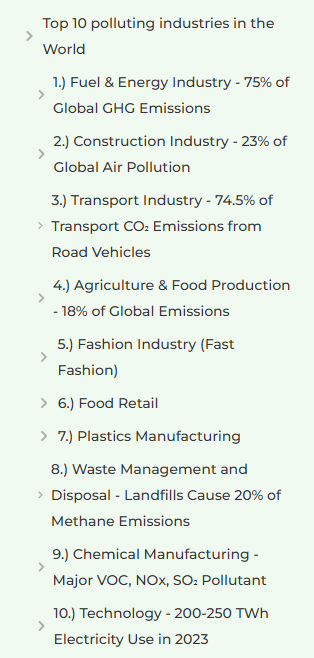Mains Syllabus: GS III - Environmental pollution and degradation
Why in the News?
Residents in various parts of Chennai have raised concerns over the rising industrial pollution in their neighbourhoods.
What are the types of industrial pollution?
|
Industrial Pollution |
|
|
Energy Industry |
Fossil fuels used for electricity and heat produce 75% of global greenhouse gas emissions, making the energy sector the biggest polluter. |
|
Chemical Industry |
The chemical industry releases harmful VOCs, NOx, SO₂, and PM, leading to acid rain, smog, and serious health risks. |
|
Mining Operations |
Mining activities can lead to significant water pollution, including acid mine drainage. |
|
Power Generation |
Power plants, especially those using fossil fuels, generate wastewater and release pollutants into the air. |
|
Food Processing |
Industries like meat packing and dairy production generate organic waste and wastewater. |
|
Textile Industry |
The textile industry uses a variety of chemicals and dyes, many of which are hazardous to the environment. |
|
Pulp and Paper Industry |
This industry uses a large amount of water and generates wastewater containing chemicals and organic matter. |

What are the impacts of industrial pollution?
What can be done to address industrial pollution?
|
Central Pollution Control Board (CPCB) Regulations on Industrial Pollution |
|
|
Categorization of Industries |
The CPCB has categorized industries based on their Pollution Index (PI) into four main categories.
|
|
Emission and Effluent Standards |
|
|
National Ambient Air Quality Standards (NAAQS) |
|
|
Consent Mechanism |
|
|
Online Continuous Effluent/Emission Monitoring Systems (OCEMS) |
|
Reference